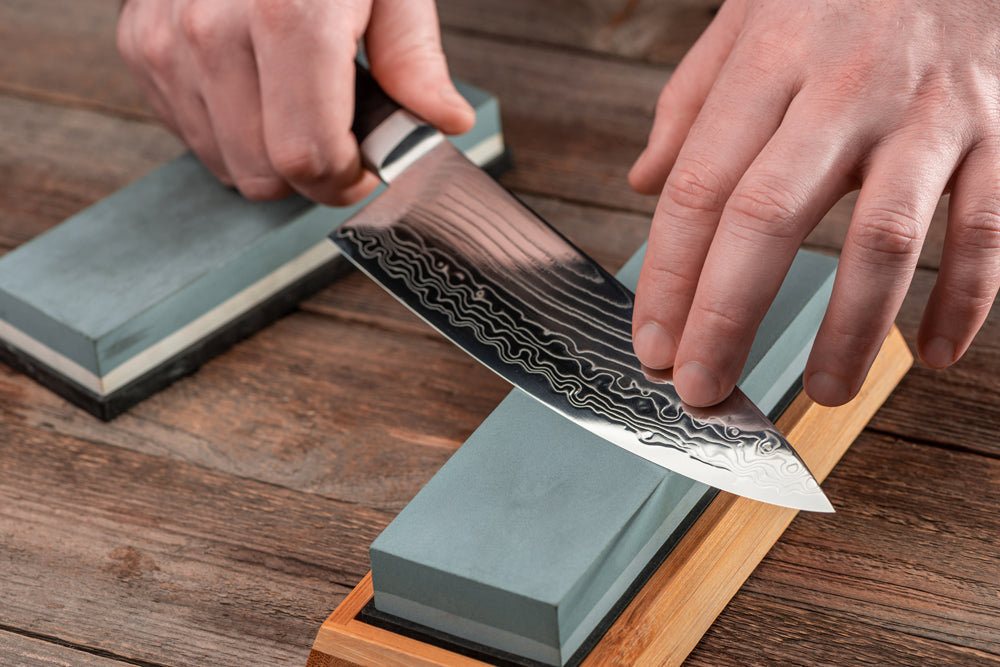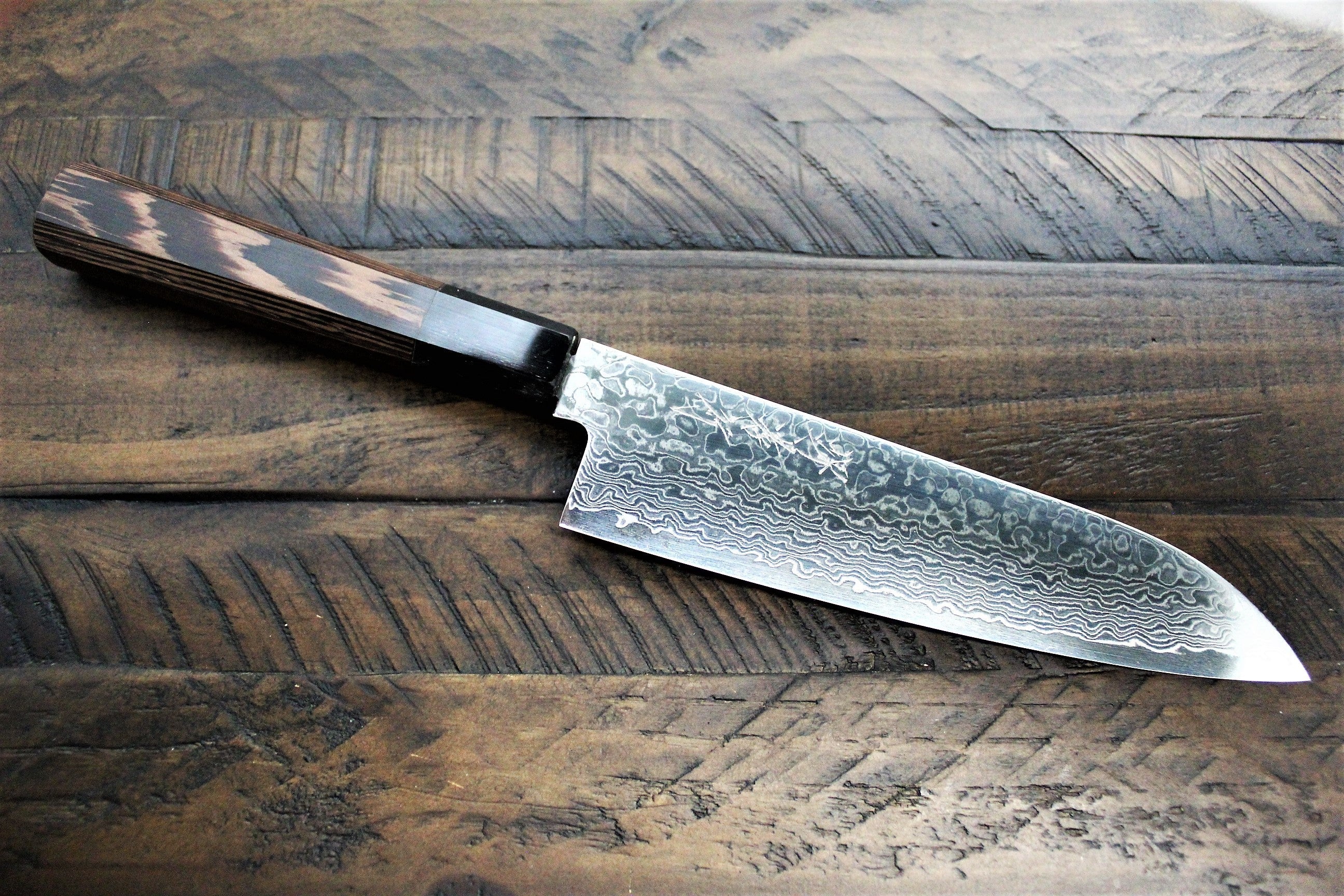
How to Make Your Japanese Kitchen Knives Last Longer
The history of Japanese kitchen knives and their origin directly influence how these knives are cared for and maintained. We can trace back the earliest dated Japanese knives to the Nara Era which spanned 710 – 794 AD. Displayed in the Nara Prefecture, these Japanese blades were long, narrow, and possessed of a strong edge and small curve. Typically used for religious ceremonies, this early fascination with artisan knives would carry on throughout Eastern society and, eventually, the world.
Eventually, these Japanese blades evolved into fine kitchen tools for use by culinary experts around the world. If you own an artisan blade or plan on investing in one, it is important to know how to make your Japanese kitchen knives last longer!
Read on to find out how to make the most out of your artisan knife purchase with maintenance tips that will keep your knife sharp for years to come.
Common Knife Styles For Japanese Cuisine
An early reverence for knives would lead Japanese culture to prioritize their use in all walks of life. Knives weren't just tools used in the kitchen, they were part and parcel of everyday life. From working and hunting to performing the Hocho-Shiki, or knife ceremony, blades were always plentiful.
When working in or around the kitchen, expect to run into the following types of Japanese kitchen knives.
- Gyuto - Also referred to as the Cow Sword, this kitchen knife is known for its clean edge and sharp profile. Considered a multi-purpose kitchen knife, the Gyuto blade is ideal for push-cutting due to the flatter design.
- Deba - Less common to Western audiences than the Gyuto, the Deba blade is a single-bevel knife commonly used for the butchering of fish. This is a heavier blade with a sharp edge and high maintenance requirements. These are not flexible knives and are pretty much used simply for butchery.
- Nakiri - This is the multi-purpose vegetable knife that every kitchen enthusiast should own. The Nakiri is ideal for the slicing, chopping, and quartering of vegetables. The thin blade lends itself to peeling and the sharp edge is easier to keep than some of the other blades that we've mentioned.
We've taken some time to introduce you to the world's most common Japanese knives. Now, we need to equip you with the expertise to properly care for them.
Maintenance Tips For Prolonging the Life of Your Japanese Knife
Japanese blades offered by companies like Hasu-Seizo are crafted with an appreciation for history and the art of Japanese knife making. For chefs, selecting quality kitchenware is an important investment. However, what’s even more important is performing proper maintenance to ensure your Japanese knives can serve you for the years to come.
Here are a few key tips that you can employ today to enjoy artisan knives that last longer and remain sharp over time.
- Hand Wash Your Blades - The desire to put every utensil in the washing machine may be strong, but it will also lead to early degradation for your blades and should never be done with your Japanese kitchen knives. These high quality kitchen knives should always be hand washed using the absolute softest sponge you can find. The goal here is to avoid abrasive damage while properly scouring the knife clean. Rinse and hand dry with a towel, minding the edge. When working with high-carbon blades you will want to immediately wipe them clean and dry them after use.
- Apply Maintenance Oil - Did you know that you can dramatically extend the lifespan of your Japanese carbon steel blades with something as simple as camellia oil? Also known as Tsubaki Oil, this maintenance oil can help to prevent the build-up of rust on the blade itself. Simply splash your blade with a few drops of oil before applying it evenly. Use a soft towel to wipe away the excess oil. This is particularly important when storing your blades for long periods of time to maximize their longevity.
- Consider Buying a Blade Protector - When your Japanese kitchen knives are not in use, they need to be properly stowed away. If you have a Western-style Japanese blade, such as a gyuto knife, you can put the Sakai Takayuki Knife Protector to good use. Available in three different sizes, this cover should be applied after finishing with your maintenance oil. Blade protectors from Hasu-Seizo are crafted from incredibly durable resin to offer longevity.
- Use the Right Cutting Board - When it comes time to get chopping, slicing, or dicing, we are going to need the right cutting board for the job. While we may enjoy the aesthetic appeal offered by glass, stone, and metal cutting boards, we really don't want to employ them for when using our artisan Japanese kitchen knives. Instead, simply opt for cutting boards made of plastic or natural wood. These types of cutting boards will provide softer surfaces that won’t dull your blade as quickly.
- Sharpening and Honing - Regular sharpening or honing of you knife can actually increase the life of the blade, in particular with high-carbon steel. Using a whetstone can help remove any corrosion which, given enough time, can cause damage to the blade. If you aren’t comfortable using a whetstone or just don’t have the time there are many knife sharpening services available, however we recommend making sure that they use a whetstone as this will provide the best edge for your knife.
Artisan Handcrafted Japanese Knives From Hasu-Seizo
Hasu-Seizo is a family-owned and operated business focused on selling the best handcrafted Japanese knives. Originally manufactured out of Sakai City in Osaka, Hasu-Seizo brings traditional Japanese craftsmanship to sophisticated kitchen cutlery. If you are looking for expert knives crafted with love and reverence for history, consider purchasing your next high quality Japanese knife from Hasu-Seizo.




